The third day of my Ecuadorean avian odyssey in the capable care of Renato and Paola of Pululahua Hostal was informally dubbed Chocó Endemics Day, as we planned to seek out and see as many natives of the Chocó Region as possible. Our first and most important stop brought us to Reserva Mangaloma, home to some truly spectacular species. I, of course, wanted to see everything, but our primary targets were Banded Ground-cuckoo and Long-wattled Umbrellabird. Long story short, we failed to see either, but not for lack of trying. Indeed, climbing steep, mud-slicked tracks to attain the apparently empty umbrellabird lek required such Herculean effort that for a time, I stopped having fun. Trying to remain upright instead of sliding down a mile of mud will do that to a person. But once I accepted that long silent stretches and trying terrain are part and parcel of the cloudforest experience, I realized that we were enjoying a great morning of birding. Then I noticed that we racked up the most substantial bird list of our trip, although not all at once…
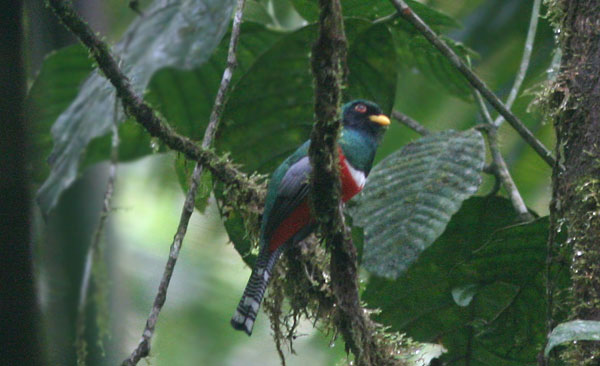
Collared Trogon
Our morning started well before morning, which ensured that we made it to the gate of the reserve at dawn, though not before spotting the first toucan of the day, a Pale-mandibled Aracari. The local machete-wielding guide led us along a broad open trail that yielded Buff-throated Saltators, Lemon-rumped Tanagers, House Wrens, Variable Seedeaters, and a little gray job that was only recently revealed to be a Golden-faced Tyrannulet (thanks Gunnar and Avery!)
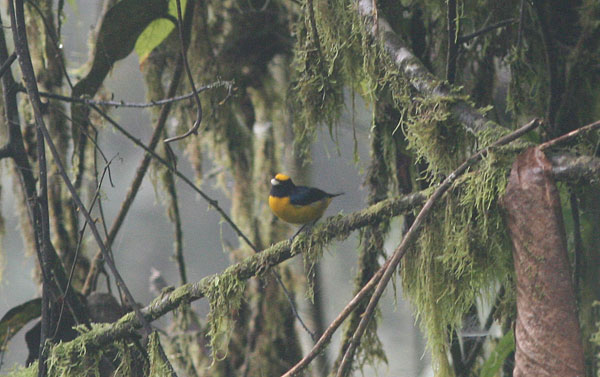
Orange-bellied Euphonia
Plunging into the rainforest, we prowled the flat portion of the reserve for the merest trace of a ground-cuckoo. Alas, we encountered no ant swarms, no ant birds, and certainly no ground-cuckoo. So we headed for the highlands in search of umbrellabirds, hawk-eagles, and whatever else might lurk high above the wet jungle. All we found at the top were a motley assortment of otherwise cool birds (Western Slaty-Antshrike, Ruddy Pigeon, Spotted Woodcreeper, Orange-bellied Euphonia, Lesser Seed-Finch) that couldn’t compensate in my mind for those coveted quirky cotingas. The highlight of the arduous trek to the lek was an Indigo-crowned Quail Dove but my morale was low.
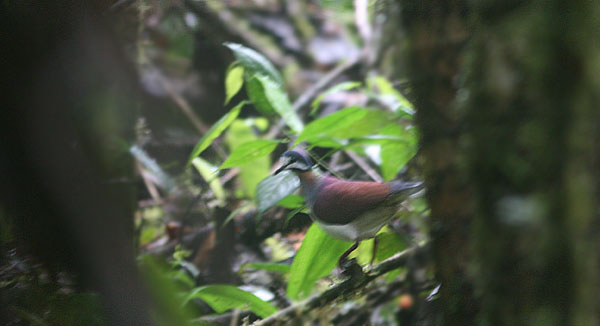
Indigo-crowned Quail Dove
As we slipped and slid down from the heights, interesting birds popped up with a Collared Trogon here, a Broad-billed Motmot there, and both Chestnut-mandibled and Chocó Toucans. A mighty Guayaquil Woodpecker worked the trees where the trail opened up and from that point, the birding (and the temperature) really got hot: Maroon-tailed (Chocó) Parakeet, Squirrel Cuckoo, Smooth-billed Ani, Red-headed Barbet, Scaly-throated and Buff-colored Foliage-gleaner, Olive-sided and Boat-billed Flycatcher, Tropical Kingbird, Blue-gray and Summer Tanager, and Blue-black Grassquit.
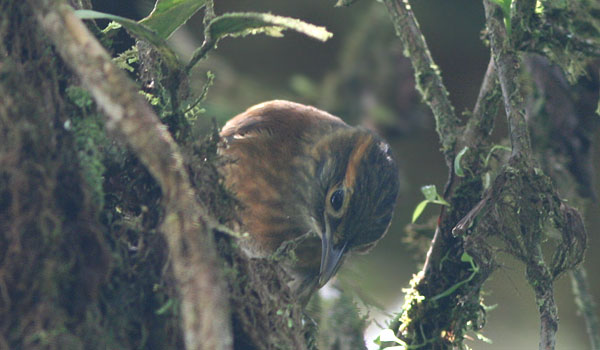
Scaly-throated Foliage-gleaner
Black and Turkey Vultures dominated the skies above but we were treated to one Plumbeous Kitesoaring languidly. The woodpeckers in the fields were smaller ones such as Olivaceous Piculet and Golden-olive Woodpecker. Surprisingly, my favorite sighting from this stretch had to be White-thighed Swallow, an otherwise dull bird with flashy pants.
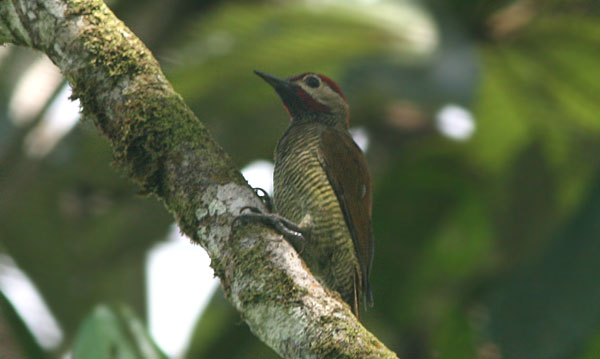
Golden-olive Woodpecker
Chocó Endemics Day was off to an interesting, though not altogether successful start. As we headed off to our next stop, flanked on either side by grassquits, Tropical Kingbirds, and Masked Water Tyrants, I thought more about the promise of Reserva Mangaloma. The vast holdings of highland, lowland, and foothills habitat shelter spectacular birds encountered regularly nowhere else in the area. While I was there, I was worked up about what I might be missing. If I ever get to return, I’ll be more focused on enjoying the amazing sights and species in front of me.
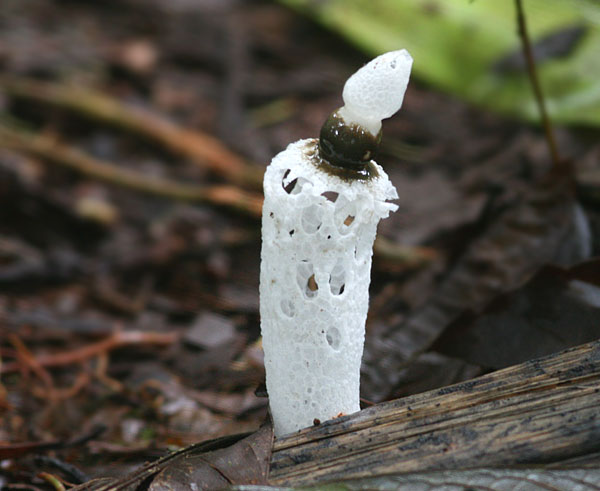
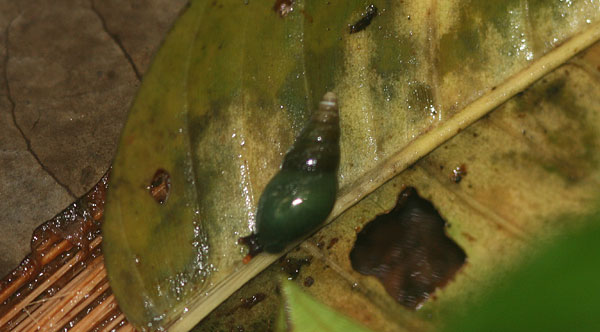












Hi Mike: I did not think the mud was so steep and deep! The climb was tough but the day was great. It is always difficult to forget about the target birds and enjoy the birds in front of your eyes. I have the same problems from time to time but always something magical happens that makes the day.. I am glad you found the magical moment of reflection where the two target birds where denied but we racked up the largest bird list of all places visited.
Thanks for the nice blog Mike!
Renato, you are an iron man! And you’re right that something magical always happens out in the field. Believe me, when I remember that morning, it’s always with pleasure and pride.
You the man Mike! I was surprised how quickly you made it to the top and that Indigo-crowned Quail Dove was your very nice find.
I have a new site for the Umbrellabird, we saw five of them in one day. Nex time you come back I will make sure you see the umbrella!
Great post… sorry for the Ground-Cuckoo.